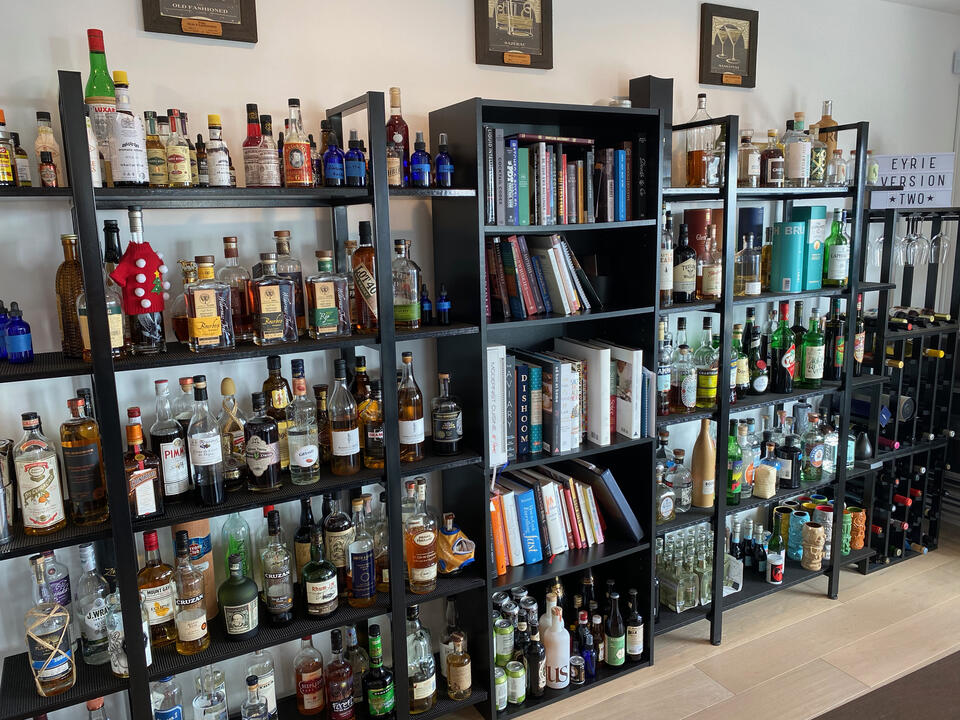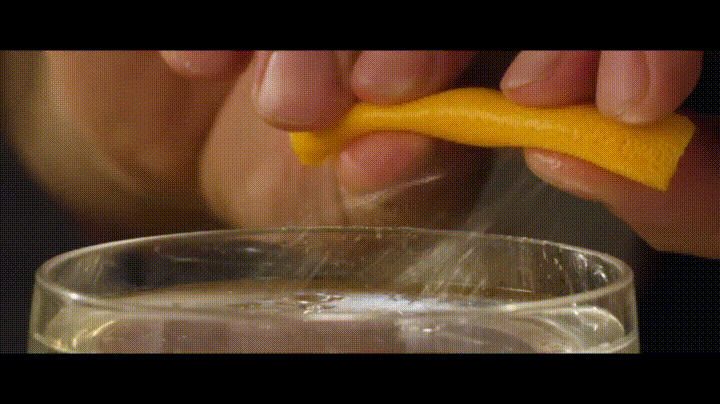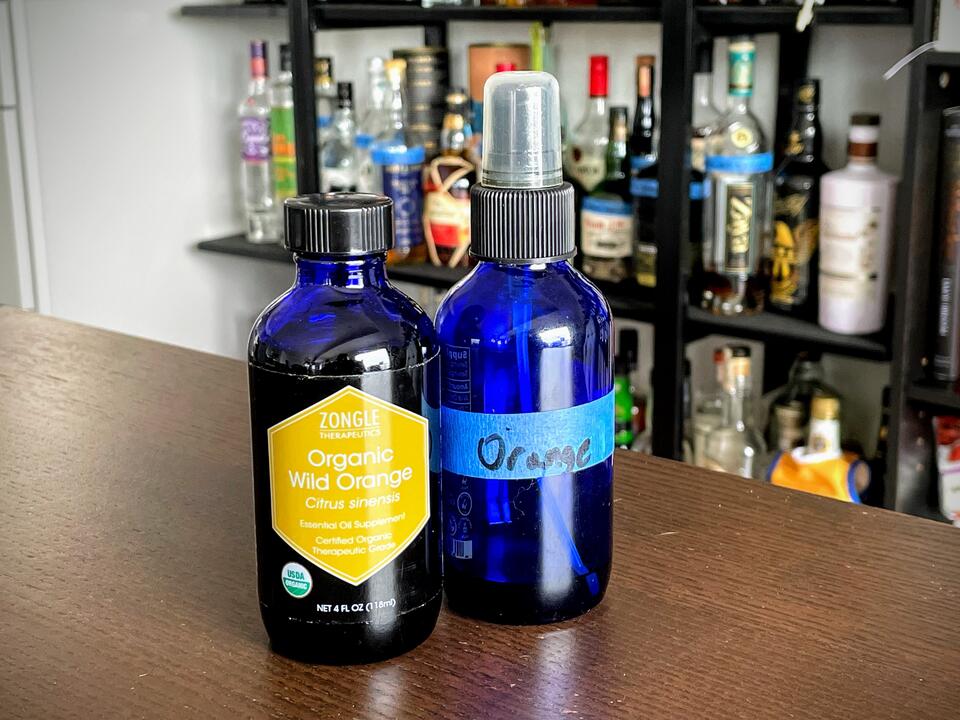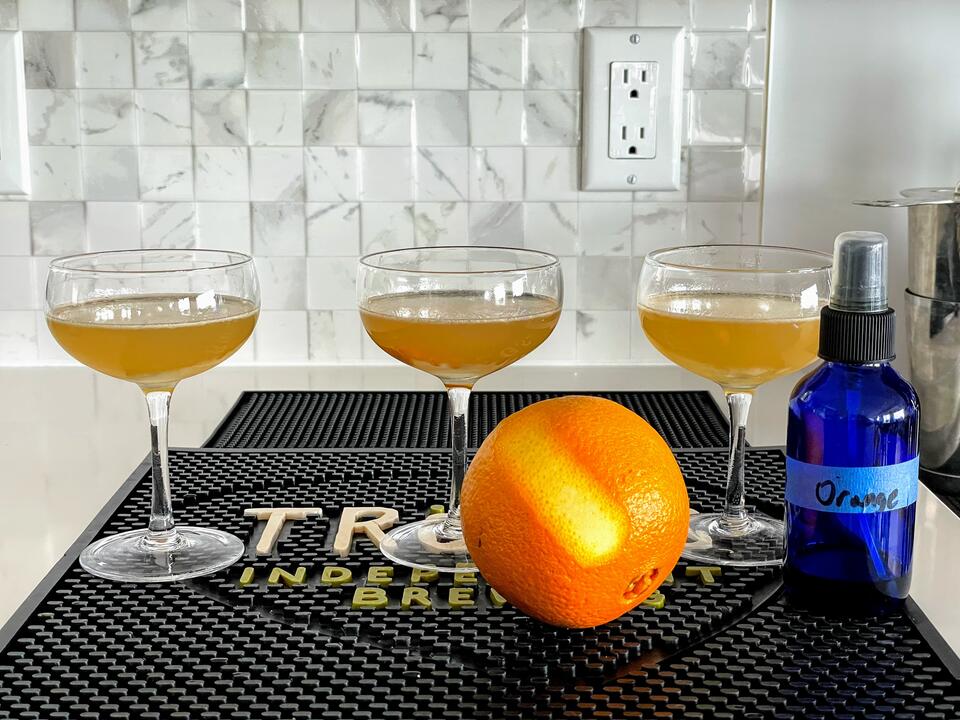Home bartending journal: Cocktail garnishes
In 2016, I reset my personal website and promised to write more frequently. At the time, it had been over 6 years since my last blog post. Well, it’s only been about 4½ years since I put that post up, so I’m exceeding my expectations! However, I also set a goal of putting out more content with less polish, and I’ve learned that I have a really tough time with unpolished content, at least when it comes to computer topics.
(Also, I almost started a post last October, but at some point in the last 4+ years a Hugo upgrade broke the theme that I was using, so I had to figure out how to fix that. Classic.)
So instead, I’m going to get things going with something completely different: cocktails! I’ve built up (with my roommates) a…passing interest in cocktails over the last 5 years…

…and, well, now I have some opinions about making high-quality drinks in a home environment. I’ve figured out some tricks that I think are pretty cool, and that I haven’t seen anywhere else (I think because most people writing about cocktails work primarily in a commercial, high-throughput environment). If we’re lucky, this will be a series. But first up, I want to talk about garnishing drinks at home.
Now, most ingredients with alcohol aren’t shelf-stable forever, but they do last a very long time, so even if you aren’t consuming them with the frequency of a commercial bar, you don’t need to drink hundreds of liters of ethanol per month to have access to variety. Garnishes are a different story. If you take a strip of orange peel off of an orange, that orange’s lifetime is now measured in hours. Mint wilts and browns faster than you can say “mojito.” In a commercial setting, this isn’t a big deal—you’ll go through several oranges during service—but in a home environment, it just seems wasteful.
It was too much trouble, so I’d usually just skip the garnish. But garnishing a drink doesn’t just make it look pretty. Most garnishes get right up in your face, and since so much of our sense of “taste” is actually smell, this can have a huge impact on how you perceive the drink. Try making 2 Old Fashioneds—one with an orange peel and one without. I tried this with a group of friends, and we were all surprised by how different the two were (and how much better the garnish made the drink).
So here’s the dilemma: cocktails are better with a garnish, but supplying garnishes is difficult given home bar throughput. My breakthrough came when I thought about why you specifically express orange peels or slap mint sprigs instead of just dropping them into the drink:

When you express an orange peel, you spray orange oil from the peel onto the surface of the drink. Hmm…spraying oil…aha!

So as an experiment, I found some orange essential oil on Amazon that was labeled as safe to ingest (I picked this one, but there are plenty of choices) and put it into a spray bottle (something like this would work—again, it’s a crowded market). To test things out, I made 3 Sidecars, using the idealized recipe from Cocktail Codex: one with no garnish, one with an orange peel, and one with a spray of orange essential oil:

Verdict: definitely a pretty close match. The garnish-free Sidecar is delicious but very dry. If you like your drinks stiff, you might enjoy this; I find it tasty but difficult to drink. Both the orange peel and the orange oil spray provide a sweet aroma that fills in for the lack of sweetness in the taste of the drink itself. They’re balanced in a way the garnish-free drink isn’t. The orange peel had a bit more sweetness to it than the orange oil spray, which was a touch more bitter. As the initial hit of oils from each started to volatilize, they became much more similar. The orange peel is definitely a bit better, but they’re both so much better than the ungarnished drink that it’s really splitting hairs. The orange oil spray is definitely a good enough substitute that I don’t feel like it diminishes the drink.
I used to worry about the volume of oil released by the spray bottle, but after measuring it out it’s close than I expected. I was able to get about 140 milligrams of oil out of an orange peel by wringing it to within an inch of its life; casually expressing a peel probably releases about half that. My spray bottle outputs about 130 milligrams per pump. That means that it’s probably about double what you’d get from a normal expressing action, but likely close enough, especially if you press the pump lightly.
There are certainly a couple drawbacks to this approach. Obviously, if a recipe calls for serving the peel with the drink, that’s not an option. While it’s certainly true that you eat with your eyes first, I can mostly live with the loss of a purely visual element so long as the drink still tastes great.
And second, occasionally a cocktail will call for “flaming an orange peel”, which is really just flaming the orange oil; it gives it a bit of a caramelized or burnt flavor. It’s comes up in tiki drinks, or anything where you need a bit more flamboyancy. We tried doing this with the orange oil spray bottle, but, uh, I don’t think you get as much aim as you do with an actual peel:
Plus, the resulting aroma isn’t even right; it just smells burnt.
But overall, I’ve found this to be a pretty successful way to incorporate the aromatic function of a garnish without the waste of fresh ingredients. Since originally trying this out, I’ve beefed up my selection of essential oil spray bottles to include lemon and mint, which covers the cocktails I make most frequently. I think it’s a great technique for home bars.
Want to try this for yourself? Here are the products I use: